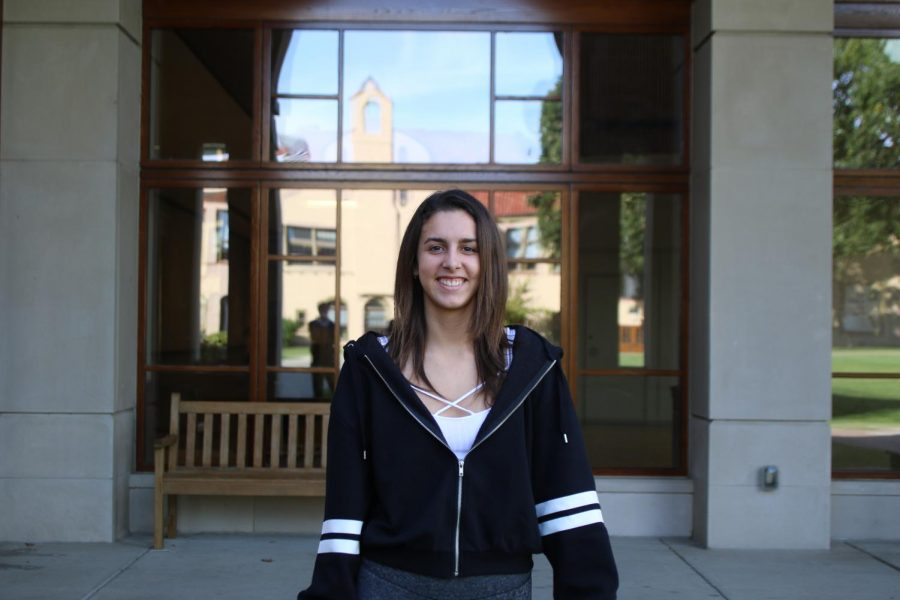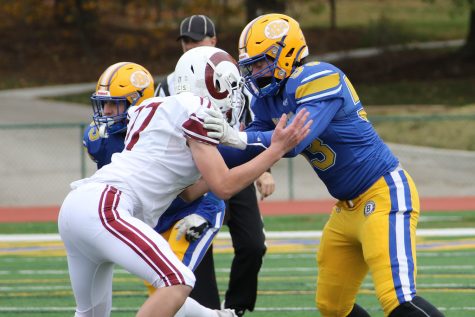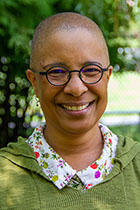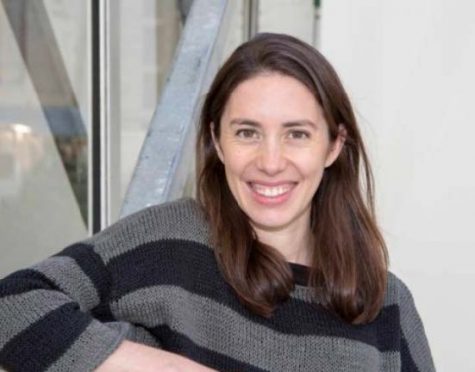From Spain to St. Louis
Portrait of Sara Ceballos.
November 16, 2017
Foreign exchange student Sara Ceballos came to the United States from Barcelona, Spain as part of AFS Intercultural Programs, a study abroad program which “[provides] international and intercultural learning experiences to individuals, families, schools and communities through a global volunteer partnership.” Her motives behind such a drastic decision as year abroad include experiencing life in a new culture and family and improving her English.
This summer, she moved in with the Tasker family, who think she is a great addition to the family; their experience with her, according to Coach Tasker, has been “FANTASTIC.” Not only has moving to the United States been an experience for Ceballos, but her move has also benefitted the Taskers, as they have thoroughly enjoyed their dinner conversations and helping Sara understand why things are the way they are here.
The differences between the US and Spain were, at first, a little frustrating for Ceballos, as she had to get used to the initial culture shock and the way people perceived her. Oftentimes, she found that store clerks would talk way too fast for her to understand, and both parties would get upset by the lack of comprehension.
During one of my first conversations with Ceballos, when I was driving her to a volleyball outing, she recounted a story of her first night in the States. On this night, she went out to dinner with the Taskers at Crazy Bowls and Wraps and was asked to order her own meal. She was immediately overwhelmed, as she did not understand the menu or how to order at an American restaraunt. The waiter became more and more frustrated with her, which was confusing for Ceballos, as he was also Hispanic.
This frustration even translated to Ceballos’ first days at school, as she “had to translate everything at all hours, and [not being] used to it, was very tired.” The difficulty in adjusting to the language barrier has gotten better but is still difficult at times. Coach Tasker thinks Ceballos has demonstrated a lot of perseverance throughout these adjustments and “is always upbeat, even when exhausted from all the stimuli of being in a different culture, and forced to get up to speed in English.”
Many of us at Burroughs are familiar with the fatigue that stems from our required language classes. Take into account the fact that, for most of us, such classes consume less than 3 of the 40 hours of our school week – now imagine such mental exertion for the entirety of every day.
Ceballos arrived in Saint Louis two weeks before the school year began. Coach Tasker wanted to avoid her potential for boredom, so he decided to connect Sara with Bailey Hahn ‘19, Elle Sullivan ‘19, and Ella French ‘19, three of Burroughs’ Nicaragua Service Trip Alumnae.
Ceballos, with her first American teenage friends, participated in many activities, such as celebrating the Solar Eclipse at Hahn’s grandmother’s farm in Dittmer, Missouri, and going to the top of the Arch. Although she has since branched out and made many additional friends, Hahn, Sullivan and French should be partially credited, at the very least, in making her feel more comfortable in her new city. In Coach Tasker’s opinion, this “made all the difference in the world in adjusting to the new environment.”
There is one obstacle that bothers Ceballos when she is trying to hang out with her many friends: her lack of access to transportation. In Spain, as well as in many cities in the United States, there is ready access to public transportation. However, despite the presence of the Metrolink and public buses, St. Louisans rely on more personal forms of transport. The lack of public transportation is definitley Ceballos’ least favorite thing about Saint Louis, and as she cannot drive because of the exchange program’s restrictions, she is forced to constantly rely on others for transport.
There is another key difference beween life here and life in Spain–the structure of the classes. In Spain, each student is assigned to one classroom, with the same classmates, and the teachers change classes instead of the students. Ceballos actually likes the way classes are organized in the US more than in Spain, because she thinks switching classes gives students the ability to meet more people and that staying in the same class, with the same classmates, can be boring.
Ceballos was a little surprised to find similarity in the way kids act and dress between Spain and the US. She considers the friendliness and the kindness of the people here as her favorite thing, and referring to the dress, she finds that teenagers from both countries have a “casual style [that is] comfortable but trendy.”
Outside of being “Sara the Exchange Student”–an epithet that Ceballos thinks is pretty funny–she also enjoys many activities, such as volleyball and dance, especially hip hop. She also speaks four languages: Spanish, English, Italian, and Catalan, one of Spain’s regional languages.
After just two months into Ceballos’ stay in Saint Louis, she has become a key piece in the Junior Class Environment, and it is safe to say that Burroughs is very glad to have become acquainted with her.







